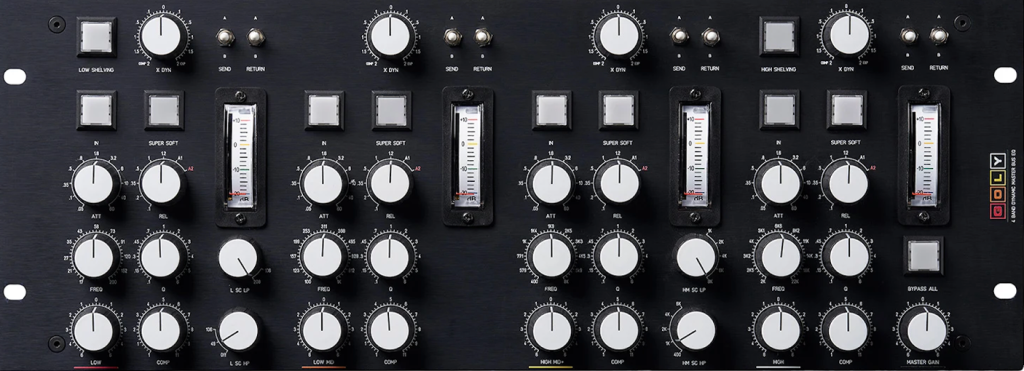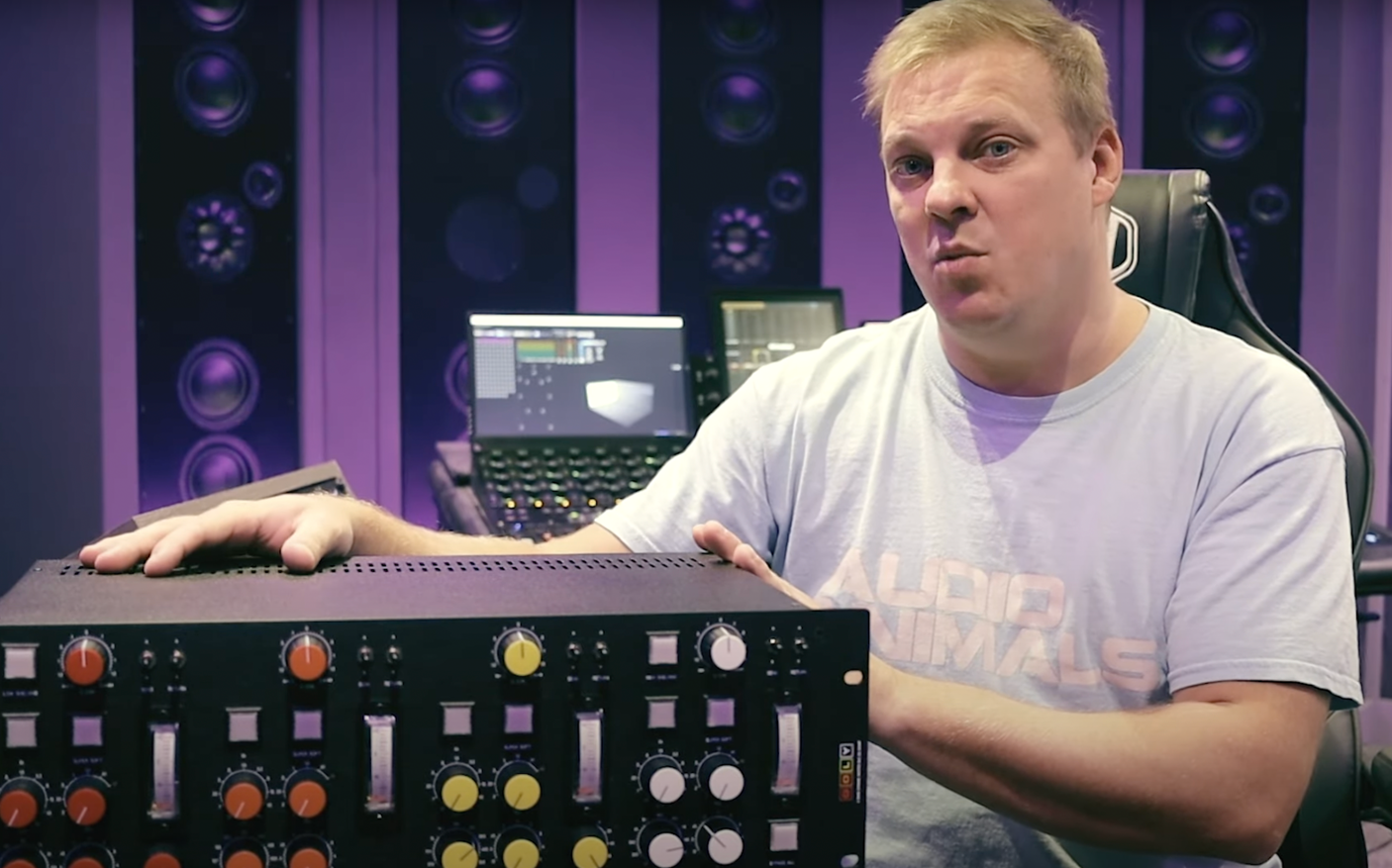In this video I review the highly anticipated Goly 4 Band Dynamic EQ (Gravity Rainbow). 4 bands of pristine quality EQ with the ability to use dynamic EQ as well as cross compression. One of the most useful and flexible EQ’s you will ever use.

In my quest to develop a dynamic EQ, I started out explororing a small, integrated circuit that was brought to my attention by Jakob Erland of Gyraf Audio, originally designed for consumer type/car stereo, providing voltage controlled equalization and gain.
When we ran initial tests on mock-ups of the circuit, everyone who had a listen was enthusiastic about the character and sound of it, but it also had the fatal flaw of sporting a horrible, inherent noise-level.
In the early stages, I thought of it as something I would overcome to a reasonable degree at some point so I kept working on all aspects of the design, and kept moving forward.
Designing for noise specs is way down on my list of priorities in this post tape-machines era, but the noise was above a tolerable threshold. The most desperate attempt came in the form of incorporating a Dolby noise suppresion circuit, but nothing worked without being too much of a compromise.
After a considerable period of time, I had to do something to keep from going insane, so I decided to swallow the sunk cost, and on the same day, I drove the experimental units to the dump to keep myself from going back to it.
After the initial defeat, it took a year or two before I circled back to the idea of doing a Dynamic EQ type unit. Of course, I was not gonna be able to bear compromising on how great the initital prototypes had sounded, but I had to approach the design from a completely different perspecitve to make sure I didnt hit the same wall of noise again.
The original design contained a full band compressor, along with a high and low shelving EQ to form a trifecta. I had figured out how to inject the dynamic processing from the low end to the high end band, and it created an effect we always refered to as “decompression” under listening tests. Decompression was just a goofy experiment that turned out to add an extremely musical way of injecting life into flat and/or overcompressed material.
The first unit I completed in this second era of the GOLY Dynamic EQs, did not have the decomp feature, and I kept it limited to the two shelving filters. I also added an amazing high and low cut filter to the design, which I had originally done as a custom unit for a mastering engineer. The “integrated circuit-approach” gifted me a lot of these things by pure chance on the first design, and attacking it from a more discrete approach was much more challenging.
We dont just want something that sounds great, it has to at least meet minimum specs, and we dont just want something with certain features, we want it to sound great.
Finally, the Dynamic Shelving EQ was born, and to make a long story short, it was soon followed by its sibling, the Dynamic Assymetrical EQ. As a pair, they constituted a full, 4 band dynamic EQ with high and low cut filters on the DS, a side chain boost EQ on the DAQ, and a hint of that lost “decompression” feature added, in the form of a toggle to turn it on and off at a fixed, static ratio.
Then, Covid came and took it all away. The designs were never done to a target price point, and they were never done with an eye on parts availability. Quite frankly, they were a little insane, and when costs skyrocketed, and parts suddenly went obsolete in a flash in that period, the 6 1/2RU combo had to be retired.
Modest working title
Even though I had to abandon the DS and DAQ, I still had all of the experience gained with the circuit, so I went back to the drawing board, armed with the user feedback gathered from the DS/DAQ unit users, and a much clearer path.
The filter designs drew heavily on the DAQ, so I was able to pour more focus into a lot of small details, like adjusting the current flow, so the filters are relatively clean up until 14dBU, then gradually start to bite a little, when they are pushed up to about 20dBU, where I find most engineers will stay at max to retain a sensible amount of headroom.
I also decided to develop a more elaborate version of the decompression feature, which felt like a complete no brainer at the time.
Alas, I did not anticipate how problematic the Crosscompression feature would turn out to be. It’s a really hard feature to explain, but I have dealers that offer demos, so I never saw a problem there.
Answering e-mails and questions about it, and trying to expalin it has been so overwhelming, it has almost felt like it was the main part of my job for a few months, I have sometimes been left with the feeling that I invented the first car with a backwards gear, and people reacted like it only goes in reverse, and also want to know why that is even beneficial.
The unit is an amazing, 2 band dynamic EQ that switches between bells and shelving modes, and I’ve had serious thoughts about ditching the Crosscomp feature, because the problem understanding this addition seemed to overshadow everything the unit has to offer to the point where it turned very negative.

